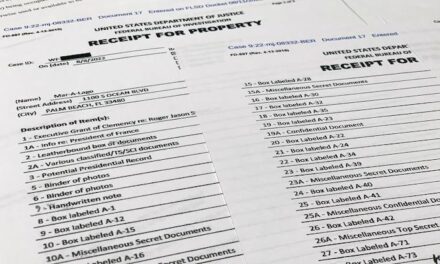California’s blithering idiocy is sometimes very photogenic, as when billions of dollars are wasted on a useless bullet train that never will be completed as advertised, or when idiotic water policies starve the farms into dust in the Central Valley and lead to toilet water recycling in Southern California.
But not all forms of blithering idiocy can be photographed. Some are experienced in total darkness, kind of like a séance. As the table lifts under our trembling fingers, the ghosts of stupid legislation speak to us from the Great Beyond.
“Cancel the contracts with the coal-fired plants!” the disembodied voices wail. “Close down the nuclear plants! Decommission the coastal gas-fired plants! Stop the construction of dams for hydro-electricity!”
Of course, they’re not really in the Great Beyond; most of them are still in public office.
As politicians furiously point fingers of blame away from themselves, let’s stop and look at a few of the decisions that led to rolling blackouts in California during a triple-digit heatwave.
First, consider the effect of the state’s vaunted but idiotic climate policies. They’re vaunted because the state’s political leaders regard themselves as global leaders. They’re idiotic because the entire state of California produces only 1 percent of the world’s total global greenhouse gases, so even if you uncritically accept every worst-case scenario about climate change and assign all the blame to humanity, the state’s policies have no effect at all on the global climate.
That’s usually the point when state leaders tell us they are really global leaders. What they don’t tell us is that their climate policies slowly starve the state of reliable electricity while raising the cost of energy to California consumers. Raising the cost of energy raises the cost of everything else, contributing mightily to the state’s highest-in-the-nation poverty rate when the cost of living is taken into account. About 20 percent of Californians live in poverty.
California’s climate policies have included legal mandates on utilities that require a percentage of the electricity they sell to be generated from renewable sources. The idea is to gradually reduce greenhouse gases. The initial goal was 20 percent, then in 2011 it was increased to 33 percent. Later it was raised to 50 percent, then 60 percent. In 2018 state lawmakers set a target of 100 percent renewable energy by 2045.
But some renewable energy technology is more equal than others. Wind and solar energy count. But electricity generated from nuclear power or large hydropower plants, even though these are renewable and produce no greenhouse gases, do not count toward the mandate. The cramped definition of “renewable” makes these renewable energy sources financially unsustainable.
One of the problems with wind and solar energy, of course, is that they’re non-continuous. This revelation was a problem for the goofy, stimulus-funded solar energy plant located off I-15 near the Nevada border. It works by reflecting the heat from the sun to boil water in tanks on towers, creating steam that turns turbines. But it gets cold at night, so the Ivanpah solar energy plant had to use natural gas to keep the water hot.
The sun goes down. Who knew?
Ivanpah is just one example of the gap between dreams and reality in California’s renewable energy policy. As the state has increased the renewable-energy mandate, it has led the nation in electricity imports from other states. From 2013 to 2017, California was the largest net importer of electricity, bringing in an average of 89 million megawatt hours annually. Pennsylvania, a state known for coal production, was the largest net exporter of electricity, with an annual average outflow of 58 million MWh.
That’s our “leadership” on climate. Our politicians pretend they’re reducing emissions, and then we import electricity from places where people are less precious about it.
In 2010, the Los Angeles Department of Water and Power derived 39 percent of its energy from coal, and at a cost per kilowatt hour that was lower than natural gas, which then made up 26 percent of the total. In 2013, coal-fired plants provided 42 percent of L.A.’s electricity. That was the year Mayor Antonio Villaraigosa announced that LADWP would divest from coal generation at an estimated exit cost of $600 million. Then in 2015, the city raised electricity rates. Then in 2019, Mayor Eric declared that the LADWP would phase out three gas-fired coastal electricity generating plants, declaring the beginning of the end of natural gas. “This is what a Green New Deal looks like,” Garcetti said.
A Green New Deal looks a lot like rolling blackouts and power outages as the demand for electricity surges on inevitable hot summer days. The California Independent System Operator, the nonprofit that runs the state’s electricity grid and dispatches power, can’t dispatch power unless there’s a power-generating source that can be turned on when needed to meet peak demand. But in order for plants of that type to be cost-effective, their owners can’t be barred by climate laws from having a market for electricity generated by natural gas or nuclear power.
The climate warriors don’t care. “Any third-grader can tell you that we need more solar power, not less,” said one environmentalist who was arguing for more battery storage.
Don’t even ask what your electricity bill will be when your utility passes along the cost of a requirement to buy battery storage for solar energy.
Be careful with those candles. You know how fast the utilities turn off the power when there’s a risk of fire.
Susan Shelley is an editorial writer and columnist for the Southern California News Group. [email protected]. Twitter: @Susan_Shelley
___
(c)2020 The Orange County Register (Santa Ana, Calif.)
Visit The Orange County Register (Santa Ana, Calif.) at www.ocregister.com
Distributed by Tribune Content Agency, LLC.
—-
This content is published through a licensing agreement with Acquire Media using its NewsEdge technology.



















Recent Comments